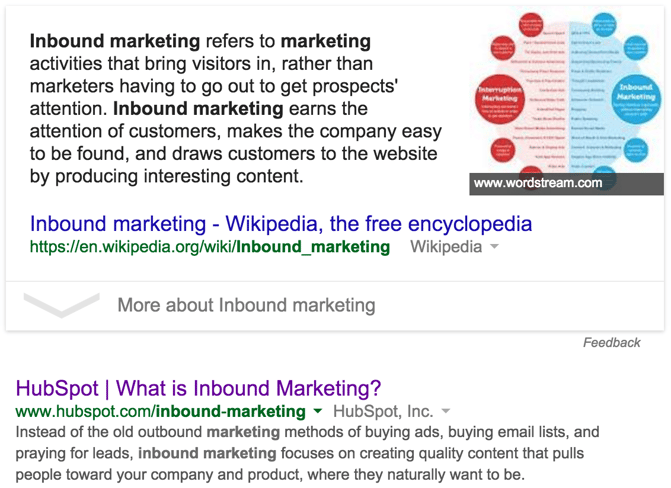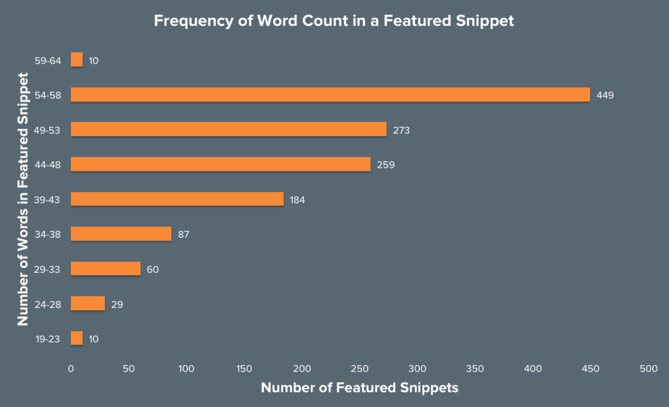
3 Key Things You Don’t Want To Miss At HubSpot’s Inbound 2019
September 20, 2019
10.10 is Coming! 10 Strategies To Help E-commerce Brands This Season
October 9, 2019
Though it may seem like an impossible feat to beat out Wikipedia for Google’s answer box spot, it’s completely doable.
According to Google, “Featured snippets are special boxes where the format of regular listings is reversed, showing the descriptive snippet first”
Getting traffic from Google just implies that you’ve got to stay ahead in the race and be aware of Google’s features all of the time. You probably would have noticed that from time to time, Google keeps changing or updating their features.
So, it’s extremely crucial that you know exactly how they work in order to rank high on their pages.
Another point to note, always keep a lookout for your competitors!
Google results are now full of so much more than just plain links. Featured snippets are the first thing that most people see when searching for a word or phrase. So, what exactly are “featured snippets” ?
What is a Featured Snippet?
A Featured Snippet is shown in some search engine results pages (SERPs), usually when a question-based query is being searched for. The snippet displays content from within one of the pages ranking on page one that directly answers the question searched for without the user having to visit the actual page.
According to Google, “Featured snippets are special boxes where the format of regular listings is reversed, showing the descriptive snippet first.”
This is a classic example:

The Featured Snippet is the box at the top that displays the direct instructions that have been pulled from www.wikihow.com/Lose-Weight-Without-Exercising webpage. You may have heard these referred to as ‘answer boxes’ in the past.
Why Should You Care About Featured Snippets?
One of the first conclusions that a lot of people involved with SEO jumped to was that featured snippets would have a hugely negative impact on the amount of people that actually click through to the pages within the results. This actually hasn’t been the case. In fact, it’s dramatically increased the click-through rate (CTR) of results ranking within it.
From a sample of just under 5,000 queries, we found that the CTR to the HubSpot website for high volume keywords increased by over 114%, even when we ranked #1 (just below the Featured Snippet — like in the example below).

So to give you an example, let’s say you rank #1 (the first post below the snippet) on page one of Google for a keyword that’s searched for 10,000 times. From the data I’ve collected, you could expect roughly 1,700 visits, compared to the 3,700 you might see if you landed the Featured Snippet spot — and that’s just one keyword.
By and large, we get much more clicks through to our content when we appear in the Featured Snippet, but this becomes increasingly important as the search volume for a query increases.
For high traffic keywords, ranking in the Featured Snippet saw an average increase in CTR of over 114%, and that’s even if we’re ranking #1 on page one.

As you can see, content between the length of 54-58 words in total seemed to appear by far the most frequently.
7 Key Takeaways to Help You Rank in the Featured Snippet Section
From the analysis that I’ve done, here are the conclusions that I’ve drawn:
- Backlinks matter much less for ranking in the Featured Snippet when you already rank on page one.
- There should be an area on the page where the search query appears in a header (h2, h3, h4, etc.).
- The content you want to appear in the Featured Snippet (the answer to the query) should be placed in a <p> tag directly below the header mentioned above. This answer should be between 54–58 words long.
- Google doesn’t always just pull through a whole paragraph of text into the Featured Snippet. If you add “Step 1,” “Step 2,” “Step 3,” etc. to the start of each subheading within a page (h2) then Google will sometimes just pull through the subheadings and list them chronologically, like in the example above for this URL. This is particularly prevalent in question-based queries.
- Featured Snippets for the same query often have different content within Google.com, Google.co.uk, Google.com.au, and Google.ie. Try “how to search on Google” as one of many examples.
- For shorter, less question-orientated keywords that display a Featured Snippet (e.g. “Inbound Sales”), it’s much more likely that Google will pull through a paragraph of text as opposed to a step-by-step. Page structure is incredibly important here.
- Google tends to prefer ‘answers’ that begin logically as an answer would. Here are a few examples to demonstrate what I mean by this:
Hope you guys gained some valuable insight from this exercise on featured snippets!
{{cta(‘691d53f1-cee4-44cb-89f8-d560c2e448d0′,’justifycenter’)}}


